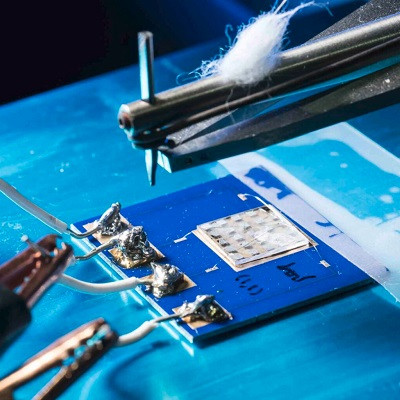“The word microscopic has its origins in the length scale of a micron which is a million times smaller than a meter. Our work is for light matter interaction within the picoscopic regime which is far smaller, where the discrete arrangement of atomic lattices changes light’s properties in surprising ways.” says Jacob.
These intriguing findings demonstrate that natural media host a variety of rich light-matter interaction phenomena at the atomistic level. The use of picophotonic waves in semiconducting materials may lead researchers to design new, functional optical devices, allowing for applications in quantum technologies.
Light-matter interaction in materials is central to several photonic devices from lasers to detectors. Over the past decade, nanophotonics, the study of how light flows on the nanometer scale in engineered structures such as photonic crystals and metamaterials have led to important advances. This existing research can be captured within the realm of classical theory of atomic matter. The current finding leading to picophotonics was made possible by a major leap forward using a quantum theory of atomistic response in matter. The team consists of Jacob as well as Dr. Sathwik Bharadwaj, research scientist at Purdue University, and Dr. Todd Van Mechelen, former post-doc at Purdue University.
The long-standing puzzle in the field was the missing link between atomic lattices, their symmetries and the role it plays on deeply picoscopic light fields. To answer this puzzle, the theory team developed a Maxwell Hamiltonian framework of matter combined with a quantum theory of light induced response in materials.
“This is a pivotal shift from the classical treatment of light flow applied in nanophotonics” says Jacob. “The quantum nature of light’s behavior in materials is the key for the emergence of picophotonics phenomena.”
Bharadwaj and colleagues showed that hidden amidst traditional well-known electromagnetic waves, new anomalous waves emerge in the atomic lattice. These light waves are highly oscillatory even within one fundamental building block of the silicon crystal (sub-nanometer length scale).
“Natural materials itself have rich intrinsic crystal lattice symmetries and light is strongly influenced by these symmetries” says Bharadwaj. “The immediate next goal is to apply our theory to the plethora of quantum and topological materials and also verify the existence of these new waves experimentally.”
“Our group has been leading the frontier of research on pico-scale electrodynamic fields inside matter at the atomistic level,” says Jacob. “We recently initiated the picoelectrodynamics theory network where we are bringing together diverse researchers to explore macroscopic phenomena stemming from microscopic pico-electrodynamic fields inside matter.”
Read the original article on Purdue University.







